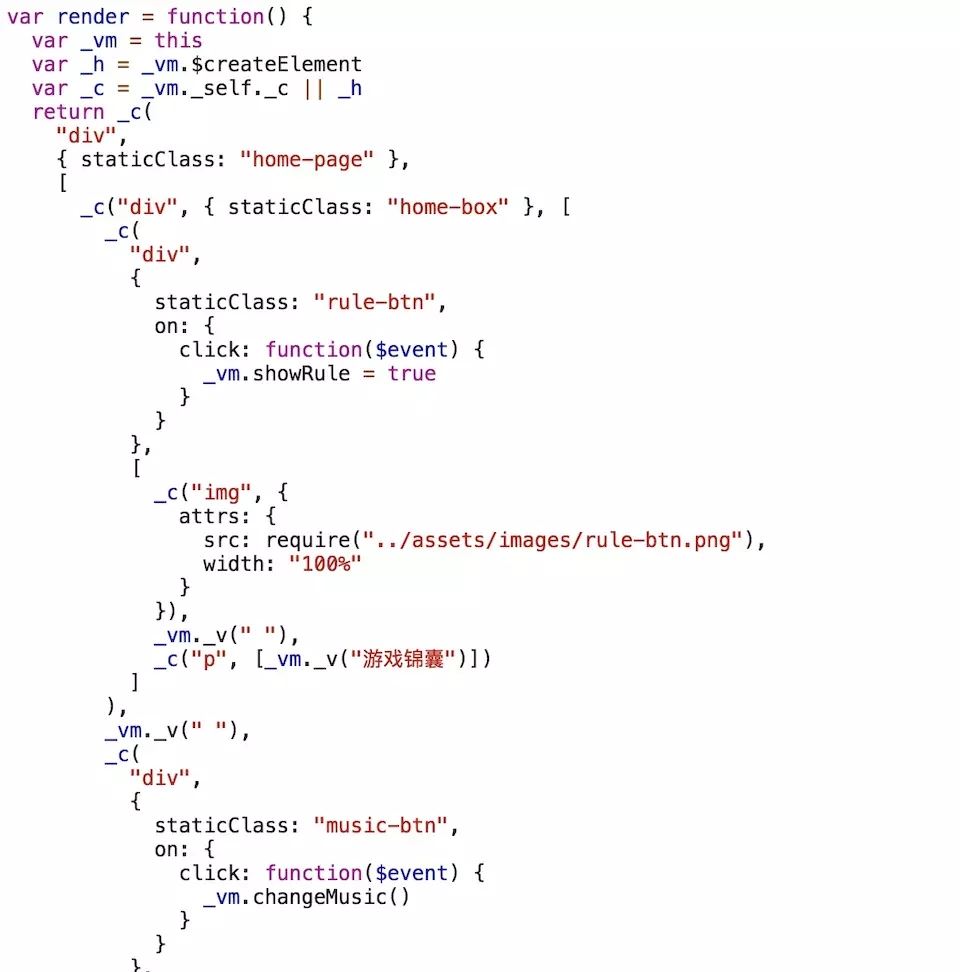vue.js内置组件之keep-alive组件使用
walker-design 人气:1keep-alive是Vue.js的一个内置组件。<keep-alive> 包裹动态组件时,会缓存不活动的组件实例,而不是销毁它们。它自身不会渲染一个 DOM 元素,也不会出现在父组件链中。 当组件在 <keep-alive> 内被切换,它的 activated 和 deactivated 这两个生命周期钩子函数将会被对应执行。 它提供了include与exclude两个属性,允许组件有条件地进行缓存。
举个栗子
<keep-alive> <router-view v-if="$route.meta.keepAlive"></router-view> </keep-alive> <router-view v-if="!$route.meta.keepAlive"></router-view>

在点击button时候,两个input会发生切换,但是这时候这两个输入框的状态会被缓存起来,input标签中的内容不会因为组件的切换而消失。
* include - 字符串或正则表达式。只有匹配的组件会被缓存。
* exclude - 字符串或正则表达式。任何匹配的组件都不会被缓存。
<keep-alive include="a"> <component></component> </keep-alive>
只缓存组件别民name为a的组件
<keep-alive exclude="a"> <component></component> </keep-alive>
除了name为a的组件,其他都缓存下来
生命周期钩子
生命钩子 keep-alive提供了两个生命钩子,分别是activated与deactivated。
因为keep-alive会将组件保存在内存中,并不会销毁以及重新创建,所以不会重新调用组件的created等方法,需要用activated与deactivated这两个生命钩子来得知当前组件是否处于活动状态。
深入keep-alive组件实现

查看vue--keep-alive组件源代码可以得到以下信息
created钩子会创建一个cache对象,用来作为缓存容器,保存vnode节点。
props: {
include: patternTypes,
exclude: patternTypes,
max: [String, Number]
},
created () {
// 创建缓存对象
this.cache = Object.create(null)
// 创建一个key别名数组(组件name)
this.keys = []
},
destroyed钩子则在组件被销毁的时候清除cache缓存中的所有组件实例。
destroyed () {
/* 遍历销毁所有缓存的组件实例*/
for (const key in this.cache) {
pruneCacheEntry(this.cache, key, this.keys)
}
},
:::demo
render () {
/* 获取插槽 */
const slot = this.$slots.default
/* 根据插槽获取第一个组件组件 */
const vnode: VNode = getFirstComponentChild(slot)
const componentOptions: ?VNodeComponentOptions = vnode && vnode.componentOptions
if (componentOptions) {
// 获取组件的名称(是否设置了组件名称name,没有则返回组件标签名称)
const name: ?string = getComponentName(componentOptions)
// 解构对象赋值常量
const { include, exclude } = this
if ( /* name不在inlcude中或者在exlude中则直接返回vnode */
// not included
(include && (!name || !matches(include, name))) ||
// excluded
(exclude && name && matches(exclude, name))
) {
return vnode
}
const { cache, keys } = this
const key: ?string = vnode.key == null
// same constructor may get registered as different local components
// so cid alone is not enough (#3269)
? componentOptions.Ctor.cid + (componentOptions.tag ? `::${componentOptions.tag}` : '')
: vnode.key
if (cache[key]) { // 判断当前是否有缓存,有则取缓存的实例,无则进行缓存
vnode.componentInstance = cache[key].componentInstance
// make current key freshest
remove(keys, key)
keys.push(key)
} else {
cache[key] = vnode
keys.push(key)
// 判断是否设置了最大缓存实例数量,超过则删除最老的数据,
if (this.max && keys.length > parseInt(this.max)) {
pruneCacheEntry(cache, keys[0], keys, this._vnode)
}
}
// 给vnode打上缓存标记
vnode.data.keepAlive = true
}
return vnode || (slot && slot[0])
}
// 销毁实例
function pruneCacheEntry (
cache: VNodeCache,
key: string,
keys: Array<string>,
current?: VNode
) {
const cached = cache[key]
if (cached && (!current || cached.tag !== current.tag)) {
cached.componentInstance.$destroy()
}
cache[key] = null
remove(keys, key)
}
// 缓存
function pruneCache (keepAliveInstance: any, filter: Function) {
const { cache, keys, _vnode } = keepAliveInstance
for (const key in cache) {
const cachedNode: ?VNode = cache[key]
if (cachedNode) {
const name: ?string = getComponentName(cachedNode.componentOptions)
// 组件name 不符合filler条件, 销毁实例,移除cahe
if (name && !filter(name)) {
pruneCacheEntry(cache, key, keys, _vnode)
}
}
}
}
// 筛选过滤函数
function matches (pattern: string | RegExp | Array<string>, name: string): boolean {
if (Array.isArray(pattern)) {
return pattern.indexOf(name) > -1
} else if (typeof pattern === 'string') {
return pattern.split(',').indexOf(name) > -1
} else if (isRegExp(pattern)) {
return pattern.test(name)
}
/* istanbul ignore next */
return false
}
// 检测 include 和 exclude 数据的变化,实时写入读取缓存或者删除
mounted () {
this.$watch('include', val => {
pruneCache(this, name => matches(val, name))
})
this.$watch('exclude', val => {
pruneCache(this, name => !matches(val, name))
})
},
:::
通过查看Vue源码可以看出,keep-alive默认传递3个属性,include 、exclude、max, max 最大可缓存的长度
结合源码我们可以实现一个可配置缓存的router-view
<!--exclude - 字符串或正则表达式。任何匹配的组件都不会被缓存。--> <!--TODO 匹配首先检查组件自身的 name 选项,如果 name 选项不可用,则匹配它的局部注册名称--> <keep-alive :exclude="keepAliveConf.value"> <router-view class="child-view" :key="$route.fullPath"></router-view> </keep-alive> <!-- 或者 --> <keep-alive :include="keepAliveConf.value"> <router-view class="child-view" :key="$route.fullPath"></router-view> </keep-alive> <!-- 具体使用 include 还是exclude 根据项目是否需要缓存的页面数量多少来决定-->
创建一个keepAliveConf.js 放置需要匹配的组件名
// 路由组件命名集合
var arr = ['component1', 'component2'];
export default {value: routeList.join()};
配置重置缓存的全局方法
import keepAliveConf from 'keepAliveConf.js'
Vue.mixin({
methods: {
// 传入需要重置的组件名字
resetKeepAive(name) {
const conf = keepAliveConf.value;
let arr = keepAliveConf.value.split(',');
if (name && typeof name === 'string') {
let i = arr.indexOf(name);
if (i > -1) {
arr.splice(i, 1);
keepAliveConf.value = arr.join();
setTimeout(() => {
keepAliveConf.value = conf
}, 500);
}
}
},
}
})
在合适的时机调用调用this.resetKeepAive(name),触发keep-alive销毁组件实例;

Vue.js内部将DOM节点抽象成了一个个的VNode节点,keep-alive组件的缓存也是基于VNode节点的而不是直接存储DOM结构。它将满足条件的组件在cache对象中缓存起来,在需要重新渲染的时候再将vnode节点从cache对象中取出并渲染。
总结
以上所述是小编给大家介绍的vue.js内置组件之keep-alive组件使用,希望对大家有所帮助,如果大家有任何疑问请给我留言,小编会及时回复大家的。在此也非常感谢大家对网站的支持!
加载全部内容